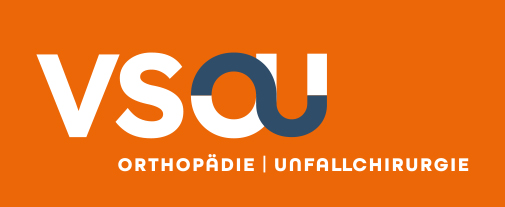Ihre Suche ergab 2 Treffer
Botulinumtoxin in der Kinderorthopädie
Zusammenfassung: Hauptindikation für Botulinumtoxin A in der Kinder- und Neuroorthopädie ist die Therapie von Patienten mit Cerebralparese. Die Behandlung gilt als sicher und effektiv und stellt für dieses Patientengut heutzutage einen unverzichtbaren Therapiepfeiler dar. Ziele sind die Funktionsverbesserung, die Förderung der motorischen Entwicklung, die Kontrakturprophylaxe und die Schmerztherapie. Der alleinigen Injektion kommt dabei nur eine untergeordnete Bedeutung zu, da die wesentlichen Therapiechancen in einem multimodalen Behandlungskonzept aus u.a. Physio-/Ergotherapie, Orthesenversorgung, operativem Therapiespektrum und systemischen Spasmolytika liegen. Moderne Therapiestrategien integrieren die Botulinumtoxin-Therapie sinnvoll in diesen Therapiekanon und entsprechen der Notwendigkeit einer langfristigen Therapieoption.
Abstract: The main indication for Botulinum toxin A in children’s orthopedics and neurosurgery is the treatment of patients with cerebral palsy. The treatment is considered safe and effective for this patient population and is nowadays an indispensable pillar. Therapy goals are to improve function, promote motor development, contracture avoidance and pain therapy. The sole injection has less importance, since the main therapeutic opportunities lay in a multimodal treatment concept, among others physio-/occupational therapy, orthotics, surgery and systemic therapy such as antispasmodics. Modern treatment strategies integrate the Botulinum toxin therapy useful in this canon of therapies and correspond to the necessity for long-term treatment option.
Aktueller Stand der Behandlung des kindlichen Klumpfußes
Zusammenfassung: Das Therapiekonzept des kongenitalen Klumpfußes hat sich im letzten Jahrzehnt durch die Verbreitung der Ponseti-Methode fundamental gewandelt. Die Ponseti-Methode stellt aktuell die Therapiemethode der Wahl dar: Das Konzept ist primär konservativ, bestehend aus manueller Redression in Etappen und Retention im Gipsverband. In ca. 80–95% der Fälle ist zusätzlich in den ersten Lebenswochen eine Achillessehnen-Tenotomie zur Korrektur des Spitzfußes notwendig. Der Gipstherapie schließt sich eine Schienenbehandlung bis zum 4.–5. Lebensjahr an. Durch das Therapiekonzept nach Ponseti konnte die Anzahl und insbesondere das Ausmaß der operativen Therapiemaßnahmen erheblich reduziert werden. Ein Rezidiv wird bei ca. 30% der Patienten trotz primär erfolgreicher Behandlung beobachtet und ist damit ein wesentliches Charakteristikum der Deformität. Es wird abhängig vom Alter des Patienten mit erneuter Gipsredression, Physiotherapie bzw. primär extraartikulären Zweiteingriffen behandelt.
Mit zunehmender Verbreitung haben sich verschiedene Modifikationen der Ponseti-Therapie entwickelt. Dennoch wird in der Literatur die klassische Ponseti-Therapie als Methode der Wahl weiterhin propagiert.
Abstract: In the last 10 years the Ponseti method has developed to be the gold standard to correct clubfeet in children. The Ponseti method involves a series of weekly manipulation and retention in casts. In 80–95% a percutaneous Achilles tenotomy is necessary to correct persistent equinus. To prevent recurrence the use of an abduction brace for 4–5 years is necessary.
Following this method the need for extensive surgical intervention to achieve a good to excellent functional and ana-tomic outcome has considerably been reduced.
The tendency for recurrence after successful correction seems to be an important characteristic of clubfoot deformity and appears in 30% of originally corrected clubfeet. Depending on age of the patient and extent of deformity new series of casting, physiotherapy and – when indicated – re-tenotomie of the Achilles tendon and tibialis anterior tendon transfer often resolve recurrence.
Although several modifications of the Ponseti method in literature exist, the original method still is the treatment of choice for clubfoot in children.
